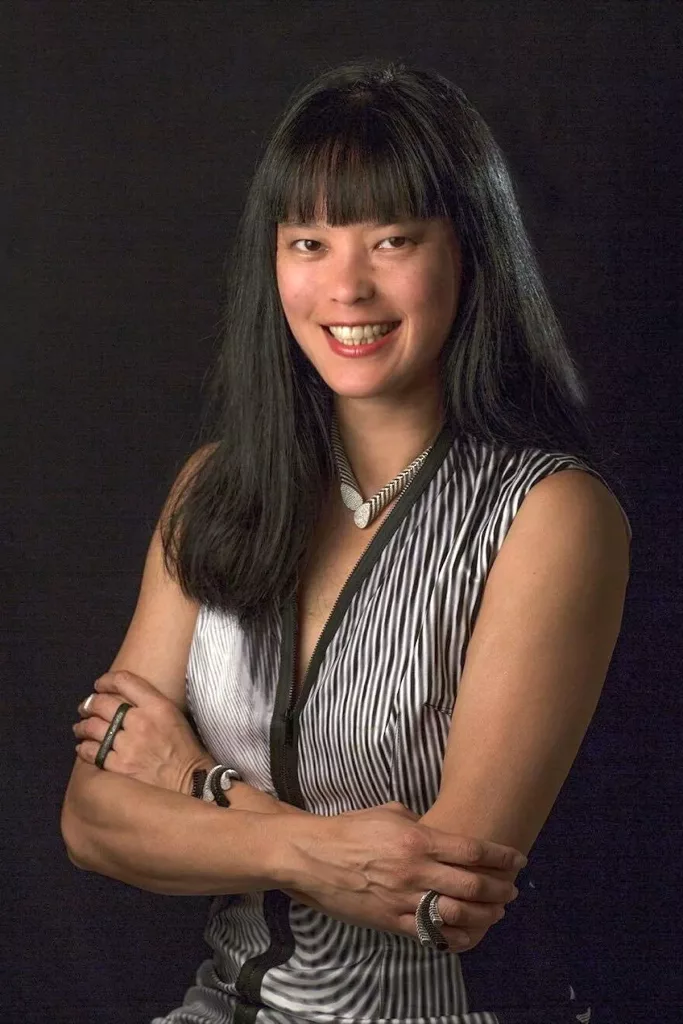30 June 2021|Female Founder Spotlight, Latest Posts, Meet the Successful Founder

Joanne Ooi is the founder of a new festival in the UK called EA Festival, referring to the region where the event is based, East Anglia. She moved to Suffolk from Hong Kong five years ago after a storied career as a luxury industry creative director, environmental activist, art gallerist and start-up entrepreneur. After an initial period of what can only be described as radical adjustment between the lightning pace of Hong Kong and the pastoral cadence of country living, it became obvious to her that there were thousands of artists living in the region, yet the connective tissue within the regional creative community was threadbare. In September 2020, during COVID-19 no less, she decided to launch the festival after having months to think about how best to contribute to the area where she now lived. We caught up with Joanne recently to discover more about her entrepreneurship journey.
Can you tell us a little about your background and the company?
I was born in Singapore but grew up in Cincinnati, Ohio. That combination alone was the crucible of my personality. I’ve never fit in. Therefore, I’ve always coped by forging ahead without worrying about what people think. I attended Columbia University and then law school at the University of Pennsylvania. Despite an education that primed me for corporate life, I sought to escape it immediately and decamped to Hong Kong right after graduation from law school, where I started my career working in garment factories in Shenzhen. In typical Hong Kong style, my career has been a pinballed from fashion to biotech to environmentalism to fine jewellery and, now, culture.
How did the idea come to you for the company?
I was at a dinner party raving about some festival I’d recently enjoyed. My friends exclaimed, “You should do your own festival!” Since I moved to Suffolk, I had been thinking about business models that could encourage greater connectivity not only within the creative industry but between the creative industry and regional business. Considering other projects I’ve taken on during my career, a festival seemed very manageable.
How did you achieve awareness?
Luckily, I’m a professional marketer – building awareness, from the middle of nowhere without an existing platform, is undoubtedly difficult. On the other hand, I’ve done it before and, truth be told, 80% is just plain hard graft. The key is being very organised and identifying as many points of marketing cross-leverage as possible. By that I mean, reciprocal and successive reinforcement of messaging with and among all the stakeholders involved in the festival, from every speaker and performer to every merchant stallholder. Fortunately, we have speakers and participants with ginormous social media footprints, e.g, QI (1M), Susie Dent (800k), Arizona Muse (280k), etc. We’re also very grateful to our media partner, David Burr, the region’s favourite estate agent, which boasts a mailing list in the tens of thousands. That relationship alone boosted our visibility overnight. I’m also working with district and county councillors to get the word out among the immediate residents of the area. Every day I wake up and think, ok, how am I going to get the festival under the nose of 10,000 more people? Last but not least, I ensured that the website and its event pages were optimised for search engines so that the festival would rank well on Google within a couple of weeks of going live.
How have you been able to gain funding and grow?
The P&L of this exercise was not a complicated one. I decided to launch the festival knowing in advance that an operating deficit was a possibility, based on various lockdown scenarios and corresponding levels of attendance. I concluded that the deficit was in the tens of thousands of pounds, not hundreds of thousands and pulled the trigger, fairly confident that I would be able to secure sufficient private donations and sponsorship funds to plug the gap. To put it another way, I wouldn’t have gone ahead at all had the downside risk been too great or unpredictable.
What are the key successes?
That question cannot be answered until the whole exercise is done and dusted but I’m already proud of the caliber and curation of the event. We have many world-class creative leaders confirmed and the event is radically diverse — in a manner which tracks how we pursue content these days — not by category — but trust in overall curation. For example, when I follow someone on Instagram, I’m not just interested in what that person is wearing but eating, visiting, reading and championing.
What were/are the challenges and how have you overcome these?
The main challenge was getting good speakers. But we overcame that very early on. On Day One, I was introduced to Dame Evelyn Glennie, the renowned percussionist, and John Lloyd, creator of Blackadder, Spitting Image and QI. Those introductions paved the way for success. The other main challenge has been future proofing the event for COVID-19. It led to the decision to livestream the event permanently from its inaugural year. While it’s tempting to say that necessity is the mother of invention, it’s been obvious for quite some time (well before COVID-19) that lives treaming is the future of the festival industry. Indeed, my overarching goal is to create a content brand, not just an event-driven business reliant exclusively on revenue from ticketed, in-person events. In the wake of COVID-19, that business model feels downright quaint now.
What are your plans now/for the future?
To keep on going…in partnership with more institutions and stakeholders in the region, I hope. I consider the festival a starting point for fostering greater connectivity across East Anglia, at all levels, between non-profits, artists and would-be collectors, art and commerce — between all the individuals and groups who are passionate about art, culture and creativity really.
What would you like to share with others to encourage them to start their own entrepreneurship journey?
It takes three years to create anything that people will notice. Remember that going from one to zero is already a gigantic achievement, like having a baby. But once the thing is born, it usually takes on a life of its own and possesses momentum. I’ve started enough organisations, businesses and brands to know that, once I’ve done the first festival, it will be ten times easier to secure sponsors, speakers and supporters. It goes without saying that excellent quality and execution during the inaugural event are critical.
Can you share your top tips for entrepreneurial success?
If you don’t ask, you don’t get: Don’t be shy. You have nothing to lose. Most observers have been astonished by the caliber of the performers and speakers confirmed to participate in the festival. Many times, I’ve been asked, “How did you get Speaker X to say, yes?” You’d be surprised by how receptive and polite even the most famous people can be when you ask them for help, advice or support in a respectful manner that shows you’re familiar with their achievements or oeuvre.
Continuously think about the worst (commercial) case, i.e., the maximum potential financial loss, and iterate your business model or implementation to take that into account at all times. Don’t be afraid to make even radical changes mid-stream if it’s the difference between the life or death of your business. You may even have to explain or apologise to the consumer. But it’s better to swallow your pride than go out of business. We recently decided to sell only day and half-day passes instead of tickets to individual events after ticket sales for the latter had begun. However, people forgave us because we explained our reasons in the same announcement (in this case, crowd and event management).
Whether it’s fashion, books, music or whatever, you’re the best judge of what the consumer wants. Never say, “I don’t like this ring [or book][or blouse] but I think there’s a customer for it.” More often than not, your gut instinct is right and that product will fail. I know this from several years of being a merchant and retailer. The products which sold best were the ones that I wanted to buy for myself — always. Your customer is your customer because they want to follow YOU. Any other litmus test amounts to patronizing the customer, as if his or her taste is worse than yours.
Related to the above point, write down your brand DNA and then test every action, utterance, statement or manifestation of your company against it. (Brand DNA is NOT your business model. It’s the character traits of your brand expression visible to the public.) I would even say, consider printing out a brand DNA statement and sticking it on the wall of your office. Creating a memorable, durable brand means no compromise on the public manifestations of your brand. On the other hand, what happens behind the scenes is a different matter….
Last but not least, stay abreast of tech news: Not only will you understand what’s coming down the pike that may disrupt you but staying abreast of tech puts you in a good position to be an early adopter in important new technologies, especially on the marketing front, e.g., Substack, Clubhouse, TikTok, etc. Because I’m a long-time observer of technology, I knew it was imperative to livestream the festival if I was going to put it on solid rails from the beginning. As far as I was concerned, that decision was pre-ordained.
What are your social handles and website links so our readers can connect with you?
EA Festival: @easfestivaluk on Twitter, Facebook and Instagram
Joanne Ooi: @joanneooi on Twitter and @culture.vlog on Instagram
TSF Reporters
The Successful Founder Magazine is the go to feature-rich magazine for founders on all stages of their entrepreneurship journey .
- TSF Reporters#molongui-disabled-link
- TSF Reporters#molongui-disabled-link
- TSF Reporters#molongui-disabled-link
- TSF Reporters#molongui-disabled-link






